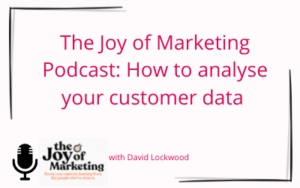Brexit has inevitably made the world of multi-channel retail more complex in a number of ways, not least shipping from the UK to the EU. From the 1 July 2021, the EU has introduced changes to how VAT is collected. This will have a big impact on UK-based direct-to-consumer retailers trading with European markets.
At our most recent Retail Leaders Forum, David Lockwood sat down to connect with a number of these retailers to discuss how to handle the developments.
The EU VAT changes
There have been two main changes to EU VAT law this July. The first is that the exemption for goods valued up to €22 has been abolished. VAT will now be charged at the rate of the buyer’s country of residence.
The second is that businesses can use the IOSS (Import One-Stop Shop) for consignments of goods valued up to €150 (except those subject to excise such as alcohol and tobacco). This means VAT is charged at the time of purchase rather than when the goods are imported into the EU. The IOSS is designed to make the process easier and help avoid unexpected customs and carrier fees.
Another important change for retailers is that selling platforms can now be considered liable for the VAT charge, rather than the seller. Under these rules, the purchase transaction is split into two steps:
- The retailer sells the goods to the marketplace on a “B2B VAT exempt with credit” basis (i.e., “zero-rated”), which means no VAT is due.
- The marketplace then sells the goods to the customer, charging VAT at the rate of their country of residence.
Understanding the origin of your goods
Customs duty depends on the origin or ‘economic nationality’ of goods. This is determined by the EU’s “rules of origin”, which are based on where the goods were produced or manufactured, rather than their point of supply. There are two types of origin:
- Preferential origin: Used for certain countries which hold special arrangements regarding duty. Goods originating from these countries are eligible to be imported with lower duty rates.
- Non-preferential origin: Used for all other types of origin. The MFN (most-favoured nation) treatment applies, where countries must be charged an equal duty rate.
But, as some of the retailers queried, what happens when you import goods from one country and then sell them into EU nations, such as transporting a product from Taiwan and selling it from the UK? When two or more countries are involved in the manufacture of a product, its origin is deemed to be the country where it underwent its “last, substantial, economically-justified processing or working”, according to Article 60(2) of the Union Customs Code.
There are legal processes currently trying to better define this Article, and whether it includes branding a generic product, but these cases have yet to be decided. For now though, the classification system is complex and, if needed, origin of goods can be determined on a case-by-case basis.
Dealing with IOSS and its alternatives
A number of retailers are registering for IOSS using intermediaries, taking away some of the complexity of setting it up directly. IOSS may also entail changes to your business operations. For example, one home accessories supplier pointed out that you must show VAT at the correct rate at the point of sale for each visitor’s country.
IOSS isn’t compulsory. If your business decides against it, you can register for VAT in every European country you sell to. However, this involves a substantial amount of paperwork.
One alternative is shipping using DDP (Delivered Duty Paid), whereby the seller accepts all responsibility, risk, and cost of transportation. This includes courier fees, duties, insurance, and any other expenses. Essentially, as the seller, you remain liable until the delivery is complete. It’s important to consider that you must clear the goods through customs in the buyer’s country and obtain the necessary approvals from the authorities there.
While using DDP carries significant risks, it is relatively straightforward and can be used as a stopgap. For example, one premium women’s footwear retailer found that most of their sales are above the IOSS’s €150 threshold, so they are using DDP while they undergo VAT registration processes in their target EU countries.
Many retailers have been using DDP with a leading delivery company. However, one issue is that this particular courier requires citizen ID numbers for certain countries but does not yet have the computer systems in place to automatically process them. These numbers must therefore be transferred manually. Some retailers have also reported another potential drawback, whereby the courier may require compulsory IOSS registration in the future anyway, regardless of the shipping method. So, the advice is to consider these potential pitfalls when choosing a delivery partner.
In our next post, we’ll be giving our tips for multi-channel retailers looking to enter international markets.




